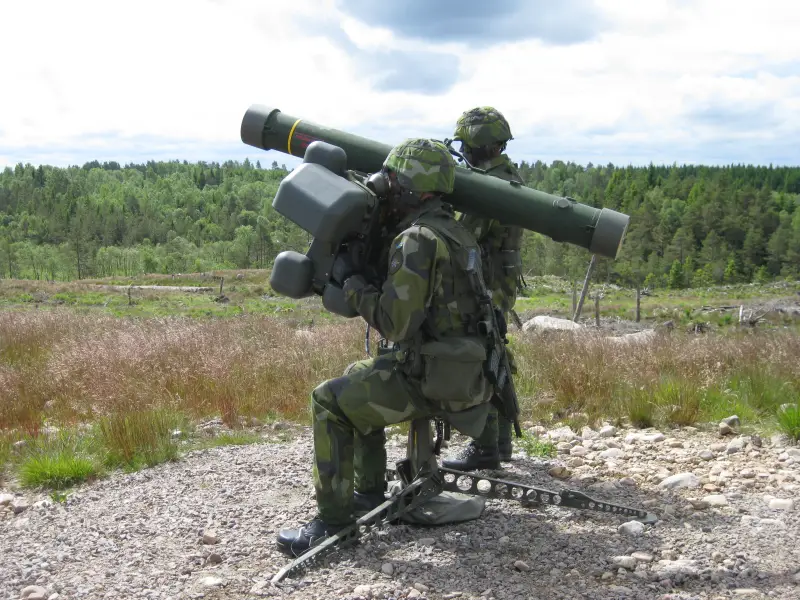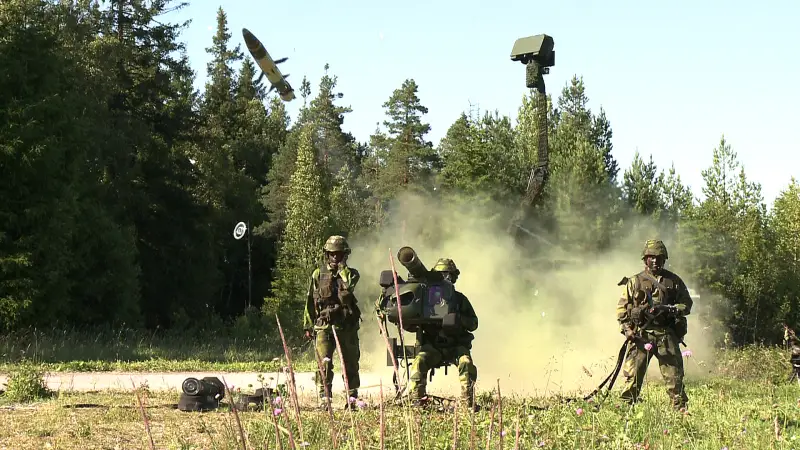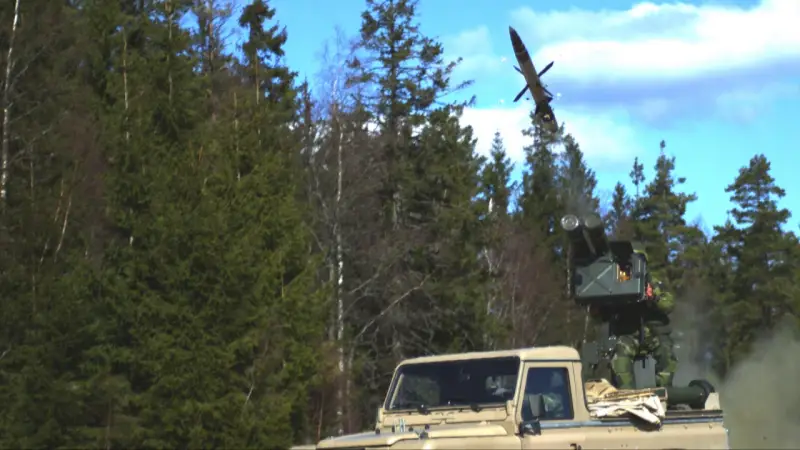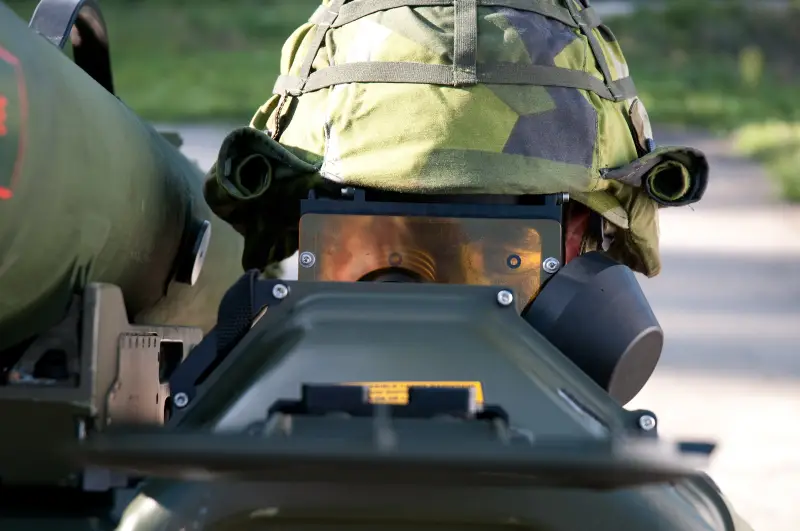Canada ordered Saab RBS 70 NG MANPADS

RBS 70 NG in position
As a result of past transformations, the Canadian Armed Forces were left without ground-based air defense systems. The tasks of intercepting air targets are now carried out only by fighters. However, to date, such an air defense concept has been recognized as unsuccessful, and urgent measures are being taken to restore lost capabilities. The first step in this direction is the purchase of Swedish portable air defense systems RBS 70 NG.
New contract
The need to restore air defense and purchase appropriate weapons in Canada has been discussed in recent years. The final impetus for drawing up such plans, apparently, was the work of the Russian military aviation in Ukraine. The Canadian military saw what the insufficient development of ground-based air defense, not to mention its complete absence, could lead to.
In early March 2023, Canada's Department of National Defense announced the launch of three programs to select and procure various weapons as part of "urgent operational requirements." One of the programs was called Air Defense - Urgent Operational Requirement (AD UOR) and provided for the acquisition of modern MANPADS.
A request for information from potential program participants was issued in March 2023. In the summer, they opened the acceptance of technical proposals from competitors. The next months were going to be spent analyzing proposals and choosing the best result. The results of the competition were going to be summed up at the beginning of 2024, and at the same time a contract for the supply of serial products was expected to be signed.

Start of a rocket
The AD UOR program did not encounter any difficulties and its early stages were completed within the specified time frame. On February 15, 2024, Canadian Defense Minister Bill Blair summed up the results of the program and named its winner. The RBS 70 NG MANPADS, developed by the Swedish company Saab, was considered the most successful and best suited to the army’s requirements.
The Swedish company was represented at the Canadian competition by its local subsidiary Saab Canada Inc. He was given an order for the production and delivery of finished complexes. This document provides for the production of an unspecified number of MANPADS with a total cost of 227,5 million Canadian dollars (approx. 170 million US dollars). The start of deliveries is expected before the end of the calendar year.
In parallel with AD UOR, the Counter Uncrewed Aircraft System - Urgent Operational Requirement (CUAS UOR) program was conducted, the goal of which was to create an electronic warfare system to counter UAVs. To date, CUAS UOR has also been brought to the stage of purchasing serial products and putting them into service. Under the new contract, 46 million Canadian dollars will be spent on such products - approx. $34 million.
The Canadian Army combat group, currently deployed in Latvia, will be the first to receive new MANPADS of the electronic warfare system. Whether such rearmament will continue throughout the army has not yet been clarified. At the same time, the special role of the new contract is indicated. Thanks to him, the Canadian army will be armed with any air defense systems for the first time since 2012.

"Portable" complex by car
Swedish development
History The Robotsystem 70 (RBS 70) MANPADS dates back to 1969, when the Swedish army decided to replace the American FIM-43 Redeye systems in service with a modern model of its own production. The development of the new product was entrusted to Bofors AB with the participation of several other Swedish organizations.
In 1972, the new MANPADS and auxiliary equipment for it reached field testing, which took the next few years. In 1975, the Bofors company launched mass production to supply products to the Swedish army. The complex was officially adopted in 1977 and began to be deployed en masse in the armed forces.
Immediately after this, the modernization process began. The first modification of the RBS 70 MK I appeared in 1982. By the early nineties, the MK II version was developed. At the beginning of the 70s, the RBS 2011 project changed hands - now the development and production of the complexes was carried out by Saab Bofors Dynamics. In XNUMX, she created the latest version of the complex with the letters NG (Next Generation).
The Swedish army became the starting customer of Robotsystem-70. Later, Scandinavian neighbors and other countries acquired new MANPADS. In total, such complexes entered service in two dozen countries in Europe, Asia and Latin America. Some export contracts appeared in the recent past and provide for the supply of modern RBS 70 NG products. In particular, Ukraine became one of the last recipients of the “next generation” RBS 70 last year.
Technical features
The RBS 70 NG is a specially designed portable air defense system designed to combat low-flying aircraft, helicopters, UAVs and airborne weapons. The design uses some original solutions that distinguish this product from other MANPADS and provide some advantages.

Operator at work
Structurally, the RBS 70 NG consists of several main parts. This is a disposable transport and launch container with a guided missile, a launch device with control systems and a tripod for placement in position. The length of the complex is determined by the TPK and reaches 1,4 m. Depending on the composition of the devices, the mass of the combat-ready complex reaches 95 kg. It can be carried by crew forces or transported by transport. Placement is carried out in a stationary position or on a carrier machine. Due to the large mass, use from the shoulder is excluded.
The MANPADS is equipped with a guided missile built in an elongated cylindrical body with two sets of X-shaped planes and rudders. Rocket length – 1,32 m, diameter – 105 mm, weight – 17 kg. The missile has a non-standard layout for MANPADS. The warhead contains a high-explosive fragmentation warhead weighing 1,1 kg with impact and laser proximity fuses. Behind the warhead there is a dual-mode solid propellant engine with side nozzles, and control equipment is located in the tail. A resettable starting motor is provided. In flight, the rocket reaches a speed of more than 500 m/s. The firing range of the latest modification of the missile is up to 9 km, height is 5 km.
The launcher has a thermal imager for detecting and tracking a target, as well as a laser rangefinder/target designator. After the missile is launched, the operator or automation keeps the aiming mark on the target, directing the laser beam at the target. At the tail of the rocket there is a laser radiation receiver, with the help of which it tracks the position of the beam and flies along it. Target tracking continues until it is defeated.
The RBS 70 NG MANPADS can be used independently or in conjunction with various detection systems. Thus, crews can receive target designation from a surveillance radar similar to the Saab Giraffe.

The current product RBS 70 NG compares favorably with other modern MANPADS with a longer launch range. At the same time, this complex is many times heavier than other systems, which negatively affects its mobility. A heavier missile with a not the heaviest and most powerful warhead is also used. Known limitations are imposed by the lack of homing and the need to track the target throughout the entire flight of the missile.
Thus, despite all the improvements and improvements, the RBS 70 NG air defense system only conditionally belongs to the portable category. At the same time, it does not have a clear superiority over other MANPADS, and is also inferior in all characteristics to heavier systems normally placed on the ground or on self-propelled chassis.
Some errors
In the 2000s, the military and political leadership of Canada developed and adopted an erroneous plan for the development of air defense. Due to the geographical features of the country, they decided to abandon ground-based systems of this class, write off all existing equipment and use only fighters to intercept air targets. In addition, they planned to rely on partnership with the United States within the framework of the joint NORAD system.
In 2012, the previous air defense system ceased to exist, but after 10-11 years the fallacy of this decision became apparent. The Canadian Army had to urgently catch up and look for new defense systems that correspond to current challenges and threats. The result of this process has already been the purchase of Swedish RBS 70 NG air defense systems and certain electronic warfare systems. In addition, a program for the development/purchase of air defense systems with higher characteristics is being implemented, which will take several more years.
Thus, decisions of the past that seemed successful and useful were in fact a big mistake. And now we have to urgently correct it in conditions of limited capabilities and the need to develop other branches of the military and weapons systems. How soon it will be possible to restore the previously disbanded air defense, time will tell.
Information